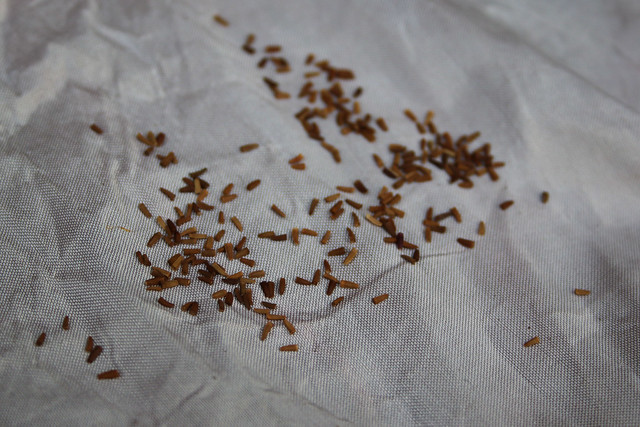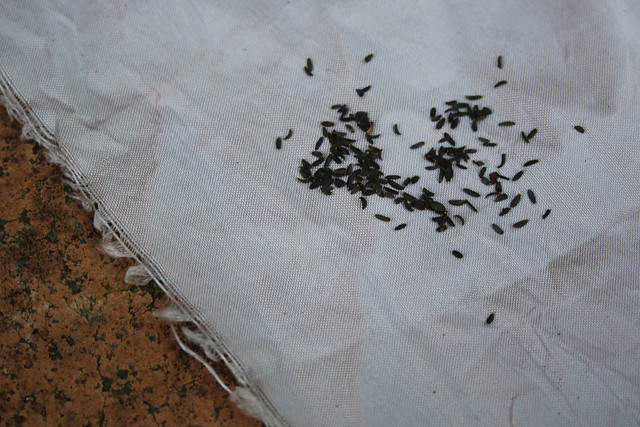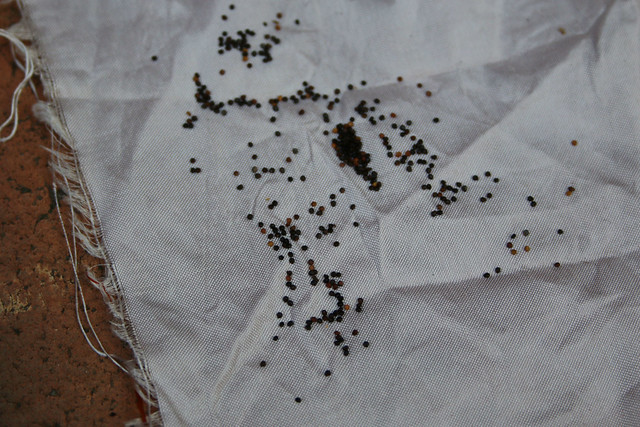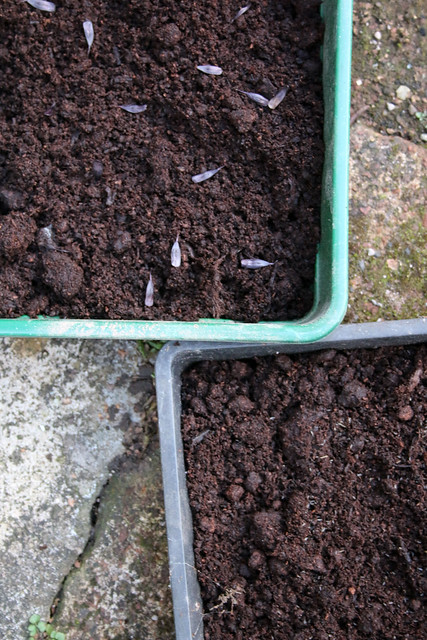I’ve written a short post for The Fold Line blog today on natural dyeing.
It reminded me that I haven’t blogged about my #naturallydyedwardrobe project lately. I have done less natural dyeing recently, it’s not as tempting in the winter – even though there are still plenty of available plant materials. However, I have dyed fabrics with indigo and madder powder, and with onion skins – blog posts to follow.
At the start of 2015, I set myself a list of natural dyes I wanted to try. I didn’t find time to try all of them, but looking back I actually blogged about quite a few natural dyes last year:
Turmeric
Paprika
Biden
Indigo
Solar dyeing with fungi and biden
Madder
Marigold
Indigo and logwood
Plus, with my guild I took part in a dyeing day, and a natural dyes exhibition.
I’m planning to continue my #naturallydyedwardrobe project during 2016. As previously, I’d like to include dyes from plants I’ve grown, materials I’ve foraged, and from store cupboard items or dye extracts which I’ve purchased.
To get started, I planted four types of dye plant seeds during May:
♥ Woad
♥ Dyers Chamomile
♥ Dyers Coreopsis
♥ Weld
I purchased the seeds from Wild Colours, and followed the planting instructions on their website. The seeds are currently in trays inside a growhouse, so hopefully they will be sufficiently sheltered from the intermittent cold weather we are currently experiencing in the UK.
I’m aiming to blog about my #naturallydyedwardrobe project more regularly over the course of the year, including recommendations for books, online resources and tools, and about how these little seeds progress (if at all – last year my woad plants failed to materialise).






May 3, 2016 at 7:06 am
I love the idea of natural dyes but the whole thing scares me, looking forward to reading about your processes !
Frankie
http://knitwits-owls.blogspot.co.uk
May 3, 2016 at 9:29 am
Will be interested to see how your seed growing goes as I as I am considering doing the same thing. I bought a woad plant the other day so thats a start. I also experiment with other plants from the garden. Golden rod gives a good yellow but needs to be cooked outside it stinks. Dead Budlhia flowers also give a lovely yellow. I try and stick with locally grown plants as advocated by India Flint whom I sure you will have come across but have resorted to trying a few purchased one and have just tried madder from which I actually got purple when combining it with a leaves dipped in iron water. I have a small amount of logwood but having discovered that the whole tree has to be cut down to obtain the colour won’t be using it again.
Good luck with your dyeing, its so exciting unwrapping bundles.
May 3, 2016 at 7:58 pm
Interesting project! I’ll be watching out for your results.
I tried dock leaves, beech leaves, used coffee grounds, dried hops and onion skins last year. The beech leaves didn’t work but everything else produced gorgeous colours so I’ll be trying again this year for 1year1outfit.
May 5, 2016 at 8:56 pm
Can’t wait to see the results! Every now and then I come across an artist with beautiful fabrics and I can’t believe it is naturally died because it is so vibrant!
May 6, 2016 at 7:29 pm
We’ve grown woad in our garden as well! I’ve bought some natural wool that I’ll dye with it so it’ll be really good to compare it with yours! Maybe we could do a joint blog post on it or something?
July 22, 2016 at 2:28 pm
Love your hand dyed wardrobe posts! Great photos of the process. I have worked with indigo before and use procion mx dyes, but have yet to try other natural dyes. Hopefully, soon!